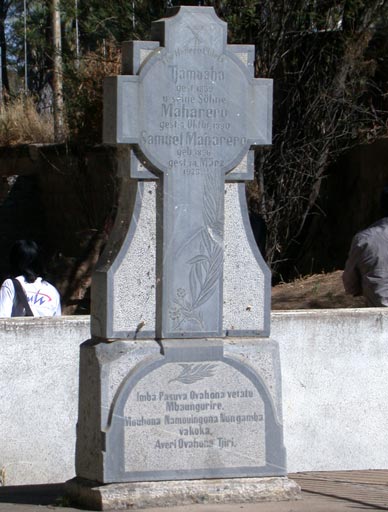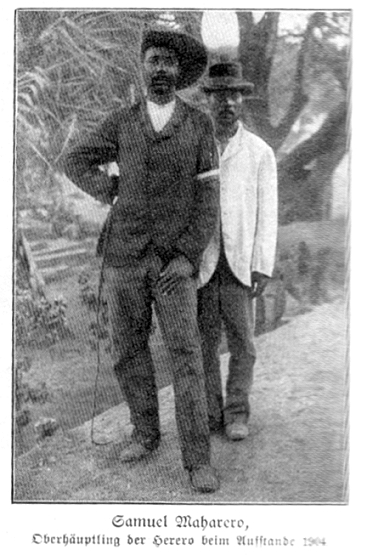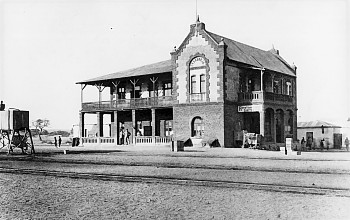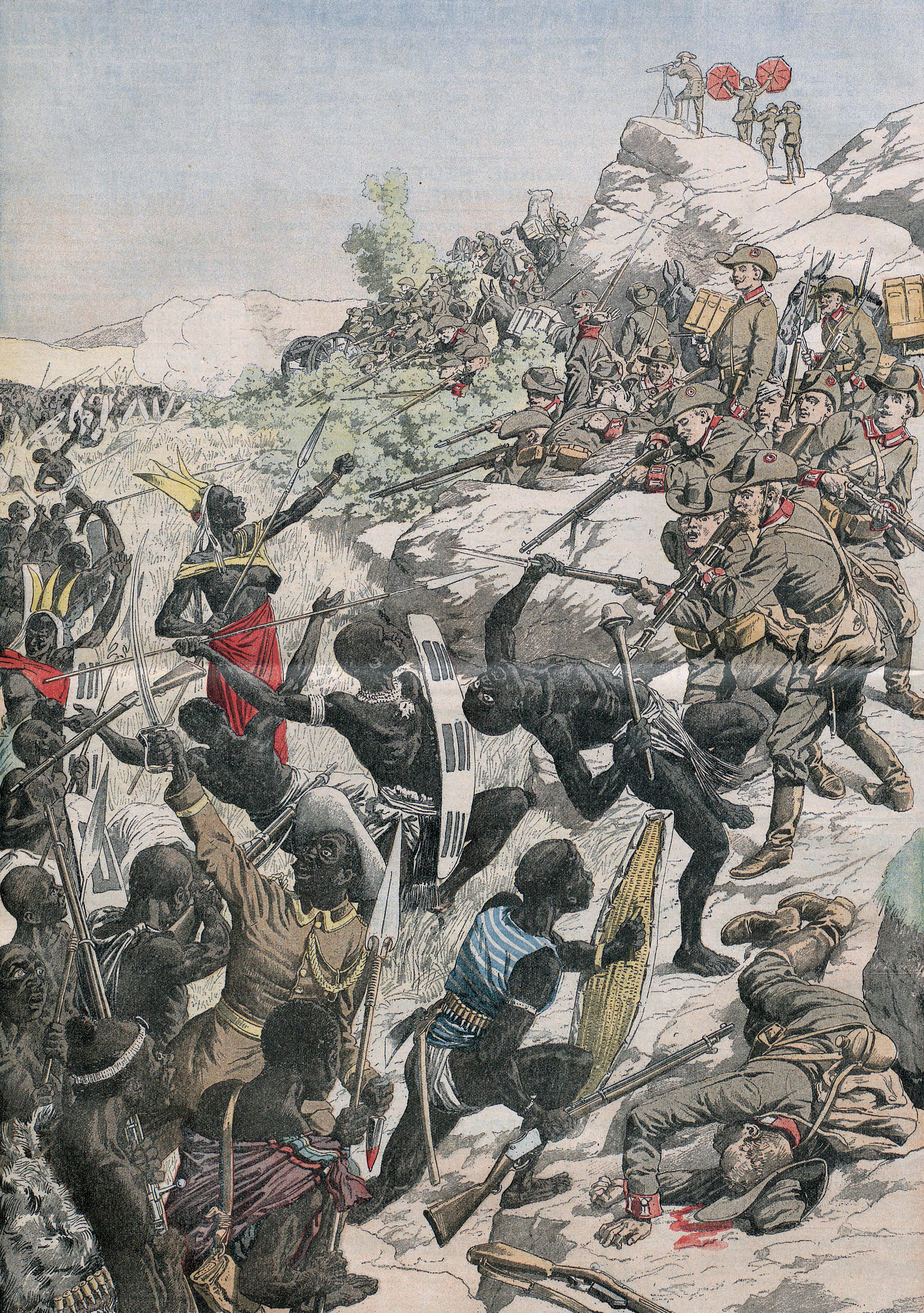|
Heroes' Day (Namibia)
Heroes' Day is a national public holiday in Namibia. It is recognized by the United Nations as Namibia Day. Celebrated annually on 26 August, the day commemorates the Namibian War of Independence which began on 26 August 1966 at Omugulugwombashe. Origin In 1966 the United Nations General Assembly revoked South Africa's mandate to govern South West African territory and placed it under direct UN administration. South Africa refused to recognize this resolution. South West Africa People's Organization (SWAPO) at that time prepared for armed resistance and founded its armed wing, the People's Liberation Army of Namibia (PLAN) in 1962. Many of its erstwhile commanders were in exile but PLAN began to infiltrate the north of Namibia to establish training camps. Omugulugwombashe was one such training camp, established in June 1966 by PLAN commander John Ya Otto Nankudhu. The group under Nankudhu had just started to build defensive structures [...More Info...] [...Related Items...] OR: [Wikipedia] [Google] [Baidu] |
Namibia
Namibia (, ), officially the Republic of Namibia, is a country in Southern Africa. Its western border is the Atlantic Ocean. It shares land borders with Zambia and Angola to the north, Botswana to the east and South Africa to the south and east. Although Kazungula, it does not border Zimbabwe, less than 200 metres (660 feet) of the Botswanan right bank of the Zambezi, Zambezi River separates the two countries. Namibia gained independence from South Africa on 21 March 1990, following the Namibian War of Independence. Its capital and largest city is Windhoek. Namibia is a member state of the United Nations (UN), the Southern African Development Community (SADC), the African Union (AU) and the Commonwealth of Nations. The driest country in sub-Saharan Africa, Namibia has been inhabited since pre-historic times by the San people, San, Damara people, Damara and Nama people. Around the 14th century, immigration, immigrating Bantu peoples arrived as part of the Bantu expansion. Since ... [...More Info...] [...Related Items...] OR: [Wikipedia] [Google] [Baidu] |
United Nations Institute For Namibia
The United Nations Institute for Namibia (UNIN) was an educational body set up by the United Nations Council for Namibia from 1976 to 1990. Based in Zambia's capital of Lusaka, UNIN was the brainchild of United Nations Commissioner for Namibia Seán MacBride, the proposal creating UNIN was adopted by the United Nations General Assembly in December 1974.A Future 'University of Namibia'?: The Role of the United Nations Institute for Namibia by Christian M. Rogerson, 1980, Cambridge University Press The forerunner to the current University of Namibi ... [...More Info...] [...Related Items...] OR: [Wikipedia] [Google] [Baidu] |
History Of Namibia
The history of Namibia has passed through several distinct stages from being colony, colonised in the late nineteenth century to Namibia's independence on 21 March 1990. From 1884, Namibia was a German colony: German South West Africa. After the First World War, the League of Nations gave South Africa a League of Nations Mandate, mandate to administer the territory. Following World War II, the League of Nations was dissolved in April 1946 and its successor, the United Nations, instituted a United Nations Trust Territory, trusteeship system to reform the administration of the former League of Nations mandates and clearly establish majority rule and independence as eventual goals for the trust territories. South Africa objected arguing that a majority of the territory's people were content with South West Africa#Bantustans, South African rule. Legal argument ensued over the course of the next twenty years until, in October 1966, the UNGA, UN General Assembly decided to end the mand ... [...More Info...] [...Related Items...] OR: [Wikipedia] [Google] [Baidu] |
Public Holidays In Namibia
{{Namibia-stub ...
:This is a list of holidays in Namibia References Society of Namibia Namibian culture Namibia Namibia (, ), officially the Republic of Namibia, is a country in Southern Africa. Its western border is the Atlantic Ocean. It shares land borders with Zambia and Angola to the north, Botswana to the east and South Africa to the south and ea ... [...More Info...] [...Related Items...] OR: [Wikipedia] [Google] [Baidu] |
German Colonization Of Africa
Germany colonized Africa during two distinct periods. In the 1680s, the Margraviate of Brandenburg, then leading the broader realm of Brandenburg-Prussia, pursued limited imperial efforts in West Africa. The Brandenburg African Company was chartered in 1682 and established two small settlements on the Gold Coast of what is today Ghana. Five years later, a treaty with the king of Arguin in Mauritania established a protectorate over that island, and Brandenburg occupied an abandoned fort originally constructed there by Portugal. Brandenburg — after 1701, the Kingdom of Prussia — pursued these colonial efforts until 1721, when Arguin was captured by the French and the Gold Coast settlements were sold to the Dutch Republic. Over a century and a half later, the unified German Empire had emerged as a major world power. In 1884, pursuant to the Berlin Conference, colonies were officially established on the African west coast, often in areas already inhabited by German missionaries and ... [...More Info...] [...Related Items...] OR: [Wikipedia] [Google] [Baidu] |
Herero Day
Herero Day (also known as Red Flag Day and Red Flag Heroes' Day, hz, Otjiserandu) is a gathering of the Herero people of Namibia to commemorate their deceased chieftains. It is held in Okahandja in central Namibia annually on August 26, the day and place Herero chief Samuel Maharero's body was reburied alongside his ancestors in 1923.1923 in Namibia KlausDierks.com Accordingly, the celebrations last three days long, although they usually begin on the Sunday nearest August 23. Background The on 11 August 1904 was the final battle of the |
Okahandja
Okahandja is a city of 24,100 inhabitants in Otjozondjupa Region, central Namibia, and the district capital of the Okahandja electoral constituency. It is known as the ''Garden Town of Namibia''. It is located 70 km north of Windhoek on the B1 road. It was founded around 1800, by two local groups, the Herero and the Nama. History Okahandja means ''the place where two rivers'' (Okakango and Okamita) ''flow into each other to form one wide one'' in Otjiherero. A German pastor, Heinrich Schmelen, became the first European to visit the town in 1827. In 1844, two missionaries were permanently assigned to the town, Heinrich Kleinschmidt and Hugo Hahn. A church dates from this period. A military post was established at the initiative of Theodor Leutwein in 1894, and it is this date that is officially recognized as the town's founding.Okahandja Hist ... [...More Info...] [...Related Items...] OR: [Wikipedia] [Google] [Baidu] |
Transvaal Province
The Province of the Transvaal ( af, Provinsie van Transvaal), commonly referred to as the Transvaal (; ), was a province of South Africa from 1910 until 1994, when a new constitution subdivided it following the end of apartheid. The name "Transvaal" refers to the province's geographical location to the north of the Vaal River. Its capital was Pretoria, which was also the country's executive capital. History In 1910, four British colonies united to form the Union of South Africa. The Transvaal Colony, which had been formed out of the bulk of the old South African Republic after the Second Boer War, became the Transvaal Province in the new union. Half a century later, in 1961, the union ceased to be part of the Commonwealth of Nations and became the Republic of South Africa. The PWV (Pretoria-Witwatersrand-Vereeniging) conurbation in the Transvaal, centred on Pretoria and Johannesburg, became South Africa's economic powerhouse, a position it still holds today as Gauteng Province ... [...More Info...] [...Related Items...] OR: [Wikipedia] [Google] [Baidu] |
Samuel Maharero
Samuel Maharero (1856 – 14 March 1923) was a Paramount Chief of the Herero people in German South West Africa (today Namibia) during their revolts and in connection with the events surrounding the Herero genocide. Today he is considered a national hero in Namibia. Life Samuel Maharero was son to Maharero, an important Herero warrior and cattle raider. He was baptised in 1869 and went to the local Lutheran schools, where he was seen as a potential priest. When his father died in 1890, he gained the chieftainship in the area of Okahandja, although he did not gain much of his father's wealth and cattle according to Herero inheritance customs. Initially, he maintained fairly good relations with the German colonial administration under Theodor Leutwein. However, increasing problems, involving attacks by German farmers, economic difficulties and pests, and the use of Herero land for railroads, all lead to diminished relations. Angered by the ill-treatment of the Herero people by ... [...More Info...] [...Related Items...] OR: [Wikipedia] [Google] [Baidu] |
Herero Wars
The Herero Wars were a series of colonial wars between the German Empire and the Herero people of German South West Africa (present-day Namibia). They took place between 1904 and 1908. Background Pre-colonial South-West Africa The Hereros were cattle grazers, occupying most of central and northern South West Africa. Under the leadership of Jonker Afrikaner, who died in 1861, and then later under the leadership of Samuel Maharero, they had achieved supremacy over the Nama and Orlam peoples in a series of conflicts that had in their later stages, seen the extensive use of fire-arms obtained from European traders. German colonization In the early 1880s, the German statesman Otto von Bismarck, reversing his previous rejection of colonial acquisitions, decided on a policy of imperial expansion. In 1882 Bismarck gave permission to Adolf Lüderitz to obtain lands which Germany would bring within its "protection", under the conditions that a port was established within the territorie ... [...More Info...] [...Related Items...] OR: [Wikipedia] [Google] [Baidu] |
Battle Of Waterberg
The Battle of Waterberg (Battle of Ohamakari) took place on August 11, 1904 at the Waterberg, German South West Africa (modern day Namibia), and was the decisive battle in the German campaign against the Herero. Armies The German Imperial Forces were under the command of Lieutenant General Lothar von Trotha and numbered just over 1,500. They were armed with 1,625 modern rifles, 30 artillery pieces and 14 machine guns. The Herero were under the command of Samuel Maharero and – in expectation of peace negotiations – had assembled some 3,500-6,000 warriors along with their families. The total number of Hereros in the area is estimated at 25,000 to 50,000. Some of them were armed with traditional close combat weapons called kirri. Preparations for battle From the opening of the Herero Revolt in January 1904 until June 11, 1904, the German military efforts had been directed by colonial Governor Colonel Theodor Leutwein. Leutwein combined a policy of military press ... [...More Info...] [...Related Items...] OR: [Wikipedia] [Google] [Baidu] |
Maharero Monument Okahandja
Maharero kaTjamuaha (Otjiherero: ''Maharero, son of Tjamuaha'', short: Maharero; 1820 – 7 October 1890) was one of the most powerful paramount chiefs of the Herero people in South-West Africa, today's Namibia. Early life Maharero, was born about 1820 at Okahandja. In 1843 he went with his father Tjamuaha to Windhoek to stay with Jonker Afrikaner, Captain of the Oorlam Afrikaners. Tjamuaha was an ally of Jonker Afrikaner until his death in 1861, albeit in a subordinate position. Maharero a leader of Ovaherero community in (1861-1890) was born in ca 1820 at Otjikune near Okahandja and he was the son of Tjamuaha and his chief wife Tjorozumo. He had several brothers and half-brothers, amongst them were Kavezeri, Kariteova, Kavikunua and Rijarua. Like his father, Maharero became an ally of Jonker Afrikaner in 1843. As from 1863 onwards, he refused to accept the dominance of the Afrikaners and was recognized by both Herero’s and the European in the country as the representat ... [...More Info...] [...Related Items...] OR: [Wikipedia] [Google] [Baidu] |







